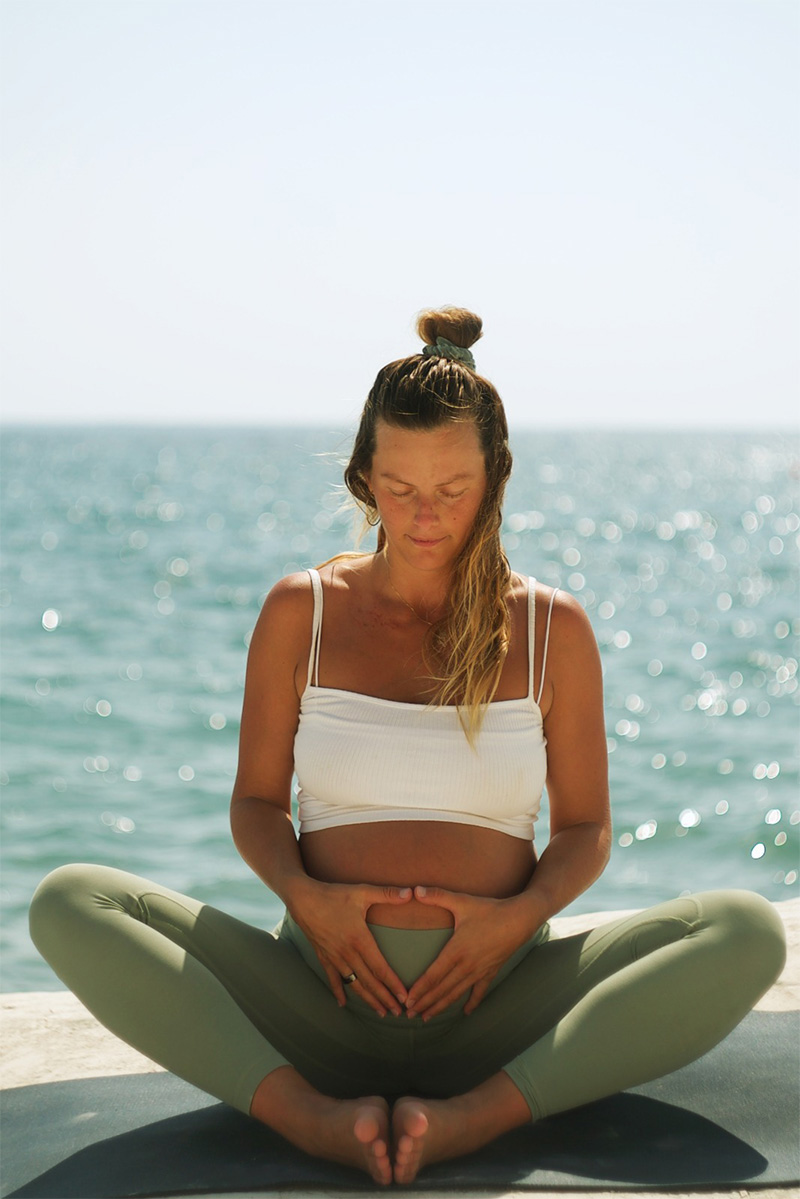
- Slow it down
Slowing down your practice can help prepare your body for the next nine months. If you do not yet have a yoga practice, try seeking out slow flow, yin, or restorative styles of yoga. Or ask anyone here at the studio what classes are appropriate. We are here to help!
- Don’t push yourself
Now is not the time for a handstand workshop! In the first trimester relaxin, a hormone that softens ligaments and tendons is released in larger amounts, which raises the risk of injury. Keep your range of motion the same, if not less than it was before you became pregnant to reduce those risks.
- Moola Bandha
Moola bandha is a highly effective pelvic floor strengthener. You can engage it by gently pulling up and in at the pelvic floor area as if you were trying to touch your tailbone to your pubic bone. Try to keep this foundation throughout your practice. If these actions are uncomfortable for you, simply bringing your attention to the pelvic floor area is also beneficial.
- Keep your body comfortable
Your body is going to be housing a tiny living being for the next 9 months. You want to feel good during practice! Bring a blanket or a pillow to your mat. Wear a soft sweater. Give yourself mini massages during poses. These are all ways to give the body a little extra love throughout your practice.
- Start using props!
Props are handy for prenatal yoga to help support the belly and other sensitive areas. Props can enhance any yoga practice. You can use common household items. Some examples of prenatal yoga props include:
- Yoga blocks or thick books
- Bolsters or pillows
- Blankets
- Strap, Bandana, or shirt
- Chair or wall
First trimester
Suggested pose: malasana (yogi squat)
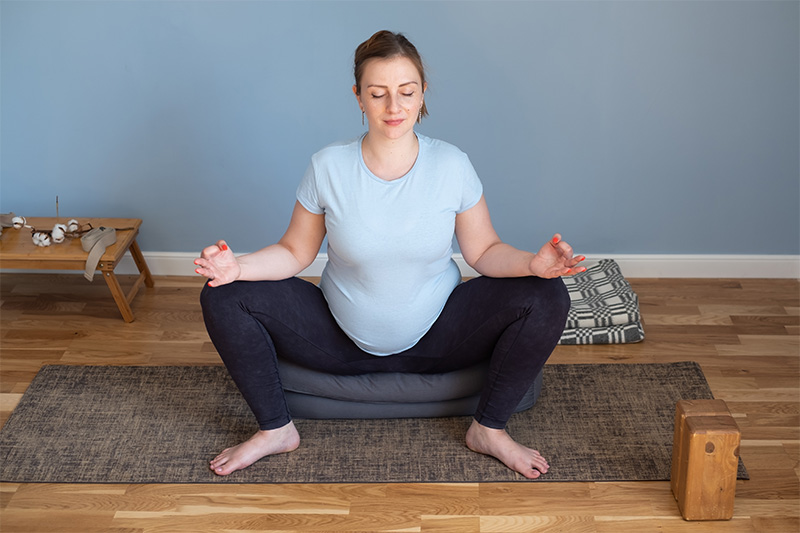
This is a terrific pose for pelvic floor health. For a more restorative option, place a block under your tailbone for extra support.
Avoid: lower back spinal twists
Twisting the lower back area can cause stress on the ligaments connected to the uterus. Focus on upper spinal twists such as urdhva mukha pasasana (thread the needle pose) instead.
Second Trimester
Suggested pose: virabhadrasana (warrior pose)
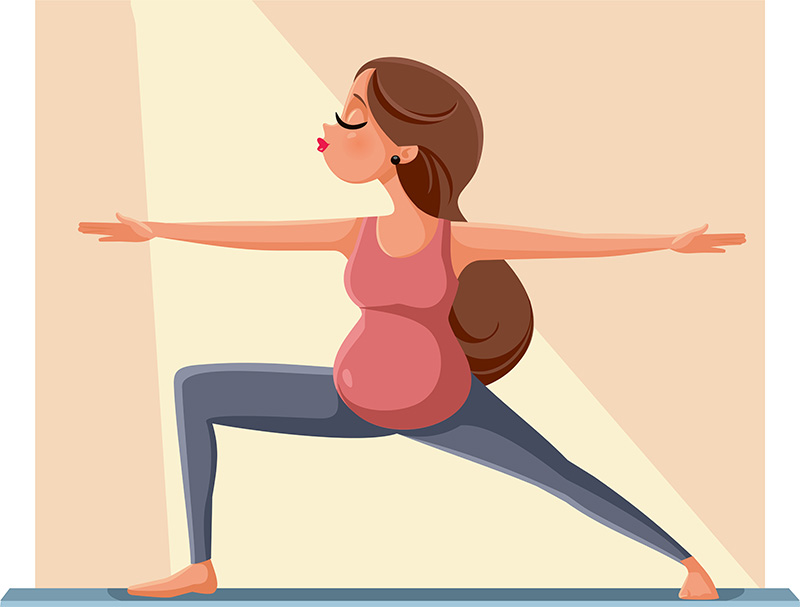
Warrior pose is an empowering posture that strengthens the legs and pelvic floor. There are three variations of virabhadrasana: I and II are more common and accessible, while III is an advanced balancing posture and should be reserved for the experienced pregnant yogi. Building lower body muscle is crucial for supporting the extra weight in the belly throughout all stages of pregnancy.
Avoid: navasana (boat pose)
Any posture that involves vigorous ab work should be avoided. Strain in the abdominal area can inhibit the growth of the belly.
Third Trimester
Suggested poses: supported supta baddha konasana (butterfly pose)
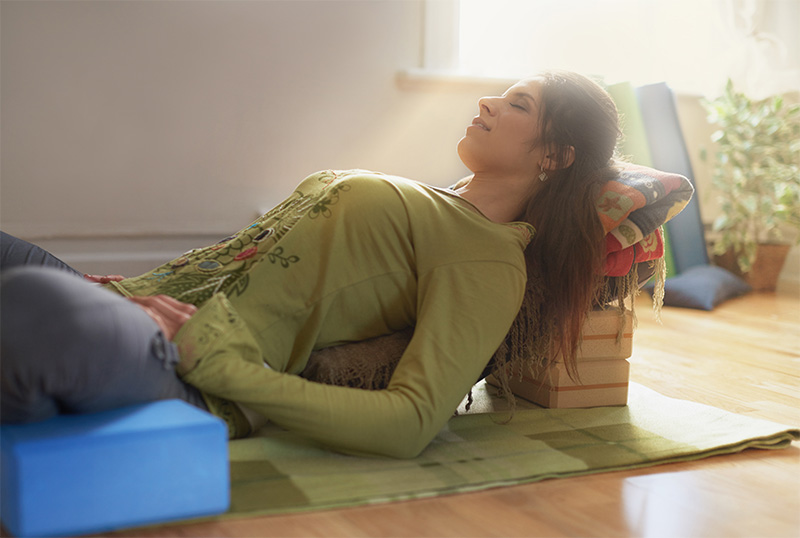
This yummy restorative pose uses props for comfort and support. Blocks under the knees; a bolster or pillow(s) as a reclined seat; a blanket over the body for warmth; feet propped up on a bolster or blanket. These are all wonderful options to promote relaxation. Be creative with your props! If an area feels too hard, soften it with a blanket or pillow.
Avoid: traditional savasana (corpse pose)
Lying on the back during pregnancy can constrict the vena cava, an essential blood vessel, that feeds blood to the heart. Another option for savasana is lying on the left side with a pillow between the legs and blankets under the hips and head. OR you can stay in the restorative pose described above!
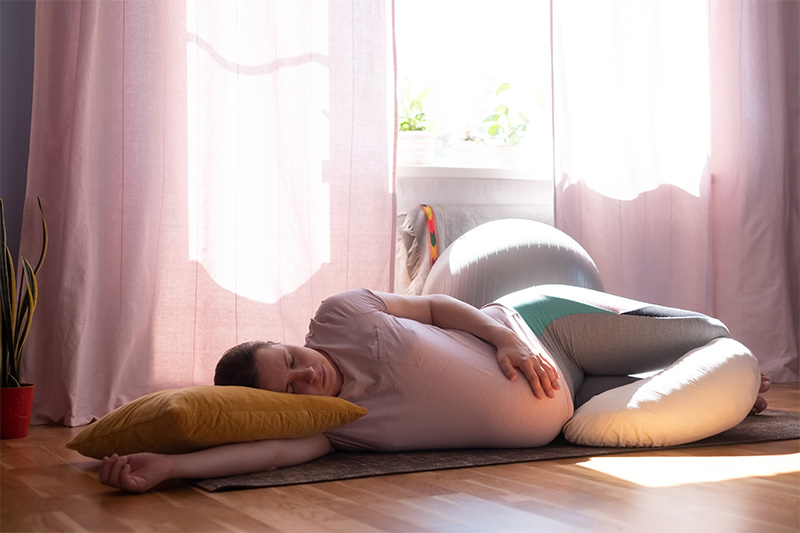
Post-natal
Suggested pose): viparita karani (legs up the wall pose)
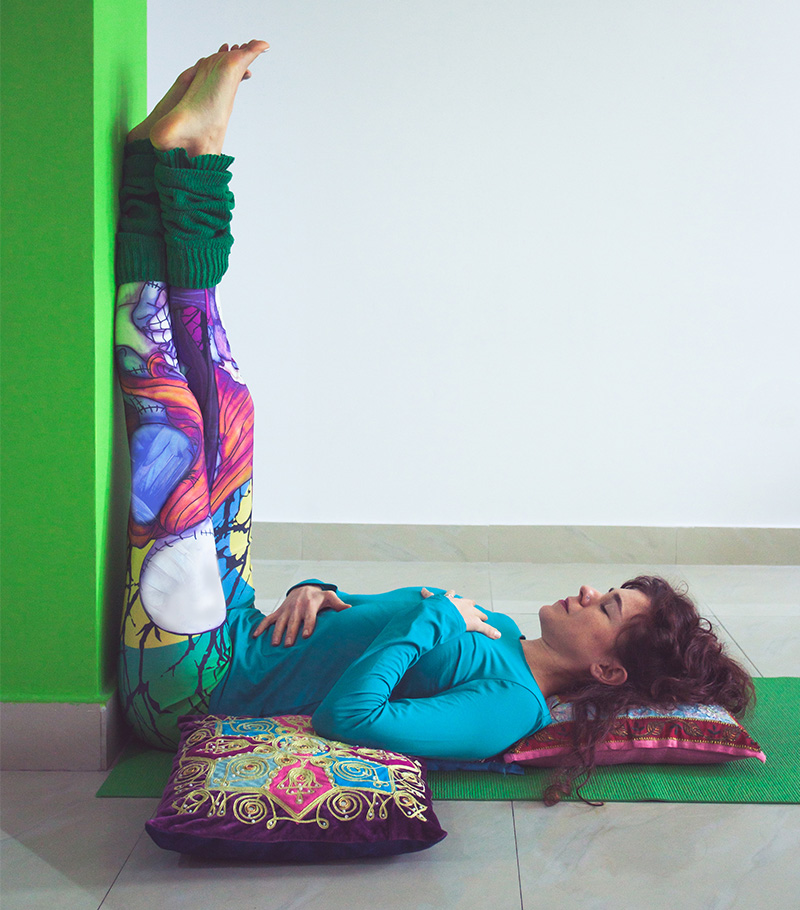
Putting your legs up the wall is a nice way to introduce compression back into the belly after the baby is born.
Avoid: Deep stretches and core building
After the baby is born, it might be tempting to jump back into your original yoga/exercise routine. The body needs time to transition back into these practices. Try to keep your yoga practices at about 80% or less. Use props for support! Slowly add in new poses every week and make sure you’re feeling good during practice.
As a Yoga Alliance certified Vinyasa Yoga teacher based in Paphos, Cyprus, I invite you to come and experience the many benefits of yoga at our studio. Whether you are a local or just visiting on holiday, our studio offers a peaceful and welcoming environment for you to deepen your practice. Please don’t hesitate to contact us to learn more and schedule your first class.
Leave a Reply